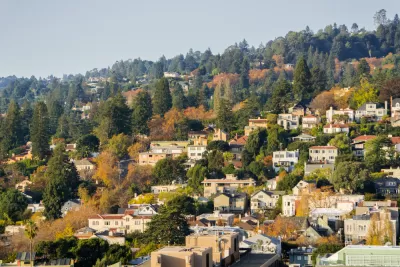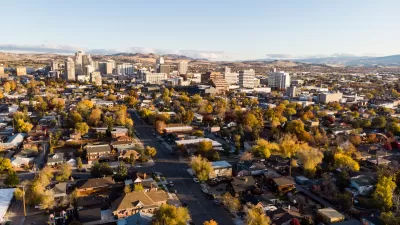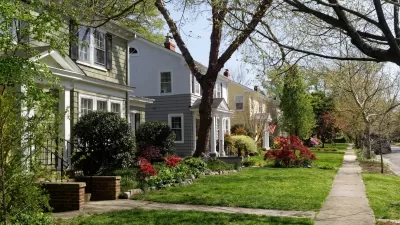A regulation limiting the number and size of ADUs in the Berkeley Hills runs afoul of state law, but supporters say it protects the safety of residents in fire-prone areas.

A state agency has ruled against Berkeley’s restrictions on accessory dwelling units (ADUs) in its hillside neighborhoods, reports Nico Savidge for Berkeleyside, dismissing the city’s claims that allowing two ADUs per lot in the Berkeley Hills would negatively impact resident safety in the event of a fire evacuation.
As Savidge explains, “Berkeley’s regulations allow accessory units to be built throughout the city. But whereas homeowners in the flatlands can build two such units on the same property — both a detached cottage and a ‘junior ADU,’ such as a basement apartment — they are only allowed one accessory unit on properties that lie in areas Berkeley classifies as Very High Fire Hazard Severity Zones.” According to Savidge, “David Zisser, an assistant deputy director for local government relations and accountability at the Department of Housing and Community Development, struck down that reasoning in an Oct. 17 letter to Berkeley Planning Director Jordan Klein,” writing that “the city has not adequately demonstrated that new ADUs will actually impact public safety.” Critics see the restriction as another way for cities to limit new housing construction in some of their wealthiest areas.
Councilmember Susan Wengraf, who represents much of the Berkeley Hills, said that “state regulators are being too inflexible with the ADU law and should have provided more leeway for cities that are at risk from wildfire to limit construction.” Wengraf says she will discuss the issue further before deciding whether to challenge HCD’s decision.
FULL STORY: Berkeley rules limiting ADUs in hills violate state law, housing agency says

Maui's Vacation Rental Debate Turns Ugly
Verbal attacks, misinformation campaigns and fistfights plague a high-stakes debate to convert thousands of vacation rentals into long-term housing.

Planetizen Federal Action Tracker
A weekly monitor of how Trump’s orders and actions are impacting planners and planning in America.

In Urban Planning, AI Prompting Could be the New Design Thinking
Creativity has long been key to great urban design. What if we see AI as our new creative partner?

San Francisco Mayor Backtracks on Homelessness Goal
Mayor Dan Lurie ran on a promise to build 1,500 additional shelter beds in the city, complete with supportive services. Now, his office says they are “shifting strategy” to focus on prevention and mental health treatment.

How Trump's HUD Budget Proposal Would Harm Homelessness Response
Experts say the change to the HUD budget would make it more difficult to identify people who are homeless and connect them with services, and to prevent homelessness.

The Vast Potential of the Right-of-Way
One writer argues that the space between two building faces is the most important element of the built environment.
Urban Design for Planners 1: Software Tools
This six-course series explores essential urban design concepts using open source software and equips planners with the tools they need to participate fully in the urban design process.
Planning for Universal Design
Learn the tools for implementing Universal Design in planning regulations.
Gallatin County Department of Planning & Community Development
Heyer Gruel & Associates PA
JM Goldson LLC
Mpact (founded as Rail~Volution)
City of Camden Redevelopment Agency
City of Astoria
Jefferson Parish Government
Camden Redevelopment Agency
City of Claremont





























